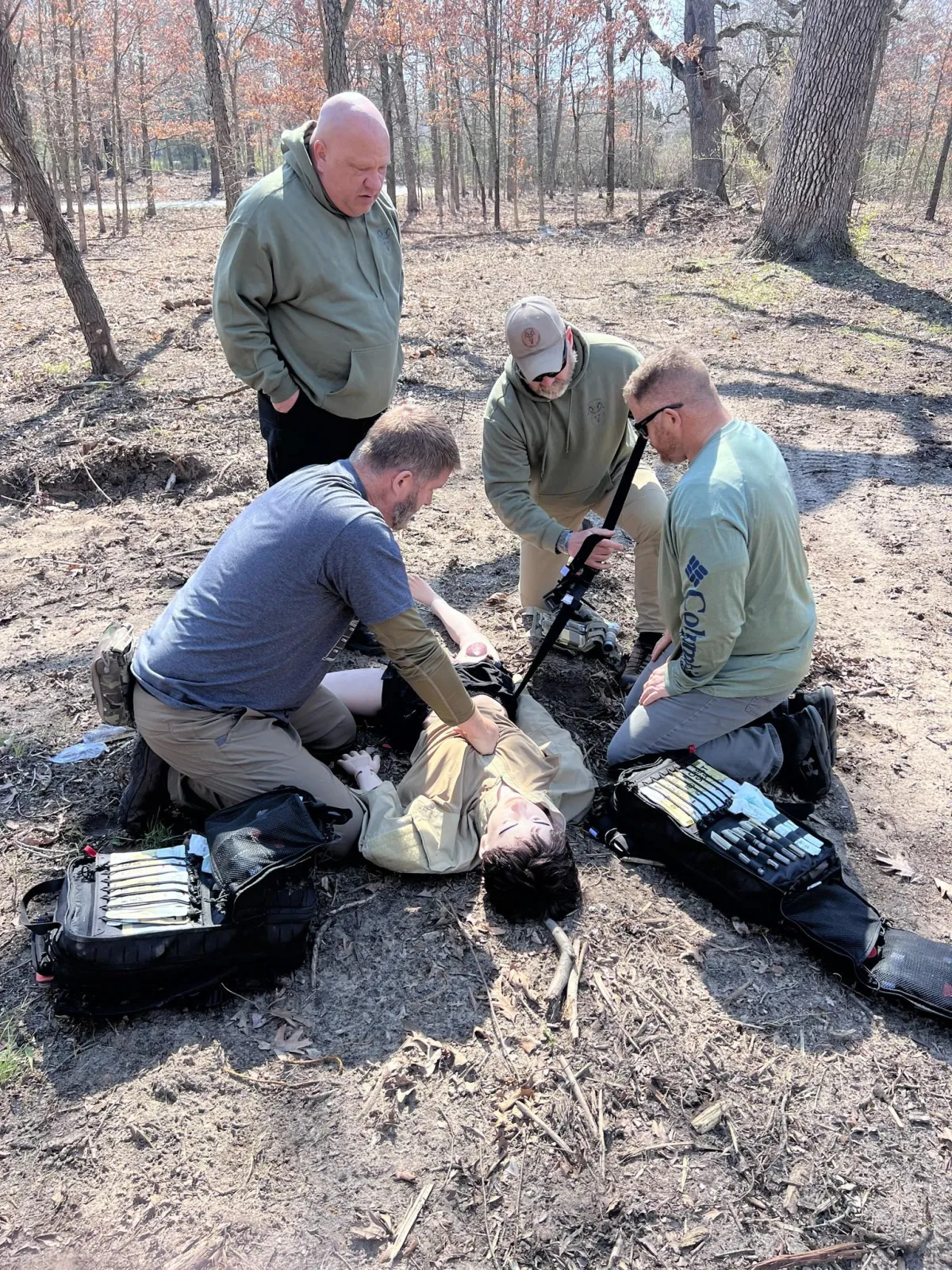
Transitioning from Chaos to Structure: Developing a Cohesive Approach for First Responders in Active Shooter Situations Part 1
Following the University of Texas Tower shooting in 1966, social scientists and law enforcement officials began developing the concept of an active shooter profile—recognizing that ordinary individuals could commit acts of extreme violence. In the early 2000s, a rise in active shooter incidents intensified national concern over unpredictable behavior and drew increased attention to the behavioral patterns of offenders.
One pivotal contribution to this field is the study by Silver and Silva (2022), which examines the 14 deadliest mass shootings between 1999 and 2020. Their research highlights key stressors, planning behaviors, and underlying mental health conditions associated with these attacks. Crucially, they concluded that such violent events do not occur spontaneously but rather evolve through a series of linked experiences. While statistically rare, the psychological and societal impacts of these mass-casualty events involving active shooters became more prominent in 2010. Widespread media coverage and the increasing scale of mass-casualty events have prompted urgent calls for reform in public safety policy, training, and preparedness.
Today, there are two types of communities in the United States: those that have experienced an active shooter event and those that are waiting for one.
Despite decades of research, many cities and towns remain critically underprepared. Communities often respond reactively rather than proactively, largely due to financial constraints that limit investment in essential resources—such as trauma kits, ballistic protection, interoperable tools, standardized operating procedures, and comprehensive training. These cost-related barriers routinely postpone life-saving improvements until after tragedy strikes.
Outdated Tactics and the Growing Demand for Change
Active shooter incidents are a distinct and complex challenge for public safety. They require specialized response protocols and close coordination among law enforcement, emergency medical services (EMS), and fire departments. The nature of these events is unpredictable, high-stress, and time-sensitive, making it crucial for first responders to react quickly and effectively. An efficient response to an active shooter can be the difference between life and death, as any delay can result in a greater loss of life.
Many current active shooter response plans, however, are based on outdated military language and protocols that do not translate well to civilian settings. Moravits (2020) has observed that law enforcement and EMS use dated military-based language when communicating and collaborating during an active shooter incident. This can hinder communication and interagency coordination efforts. These challenges have led to a need for evaluation of existing protocols.
The Columbine Catalyst
The 1999 Columbine High School massacre in the United States brought to the public's attention critical inadequacies in planning and interoperability, including the lack of communication, tactical synergy, and capability gaps when confronted with firearms and improvised explosives in a school setting. The incident caused 14 fatalities and 24 injuries (King & Bracy, 2019). To address the noted issues, nationwide training and preparedness protocols were established and include more robust interoperability tactics and agile custom SOPs. These were also designed to serve as guides in training and exercises with two main training focuses: neutralize the threat and prevent further loss of life (Harris, Jr., 2019).
SWAT-Centric Responses and Their Limitations
Initially, the primary solution was to increase the capabilities of Special Weapons and Tactics (SWAT) teams. However, this approach diverted focus from equipping first responders—such as patrol officers, EMS, and fire personnel—with the necessary skills to manage the initial chaos. Over time, law enforcement agencies across jurisdictions adopted increasingly militarized methods and equipment, often without fully assessing their relevance or effectiveness in civilian settings (Sarao, 2014).
These GWOT-inspired tactics do not address the realities of domestic emergencies, where patrol officers and other first responders are often first on scene. This reliance on military-style interventions, without properly preparing local responders, creates operational delays and communication barriers.
A Civilian-Focused Framework for Interdisciplinary Response
To remedy these issues, a new framework has emerged that emphasizes civilian-centered terminology, tactics, and training. This model trains patrol officers in situational effectiveness and fosters tactical collaboration between EMS and fire personnel (Russell, 2007). It also clearly defines the roles of each agency during active shooter incidents, promoting interoperability and coordinated care (Lariccia, 2023).
Despite decades of research and evidence-based recommendations, many communities across the nation continue to disregard these findings—persisting in isolated, agency-specific response models rather than embracing unified, multidisciplinary approaches. This continued fragmentation undermines the effectiveness of active shooter response efforts. In contrast, the evolving CSR framework leverages current research to offer scalable and practical solutions tailored to the needs of modern public safety organizations. It directly addresses persistent gaps by promoting clear interagency communication, rapid tactical decision-making, and coordinated life-saving interventions during the most critical phases of an incident.
Three Goals Driving the New Framework
The CSR framework is driven by three core objectives designed to improve outcomes in active shooter incidents:
1. Develop integrated response strategies specifically tailored to the complexities of civilian environments.
2. Strengthen interagency communication to promote shared situational awareness and coordinated tactical execution.
3. Prioritize immediate life-saving interventions to reduce operational chaos and preserve lives at every stage of the incident (Harris, Jr., 2019).
At the heart of this approach is a commitment to equipping first responders with the readiness, adaptability, and collaborative skills needed to overcome common coordination barriers and act decisively in real time.
The CSR Model: Chaos, Stabilization, Recovery
To support a modern, unified response to active shooter incidents, the Chaos, Stabilization, Recovery (CSR) framework provides a structured, adaptable model aligned with the National Response Framework (DHS, 2019). CSR enhances interagency coordination, enables real-time medical intervention, and adapts to dynamic, high-threat environments through three key phases:
· Chaos Phase
Law enforcement makes immediate entry to neutralize the threat.
Tactical command post established for coordination
Medical Rescue Teams (MRTs) staged at the command post in the Warm Zone
MRTs deployed rapidly to provide point-of-injury care
Casualty Collection Points (CCPs) positioned near victims to reduce treatment delays (Miles & Crook, 2021)
· Stabilization Phase
Threat contained; Unified Command activated at the ICP
CCPs set up in or near Hot/Warm Zones for timely care
Continuous triage and reassessment
Tactical evacuation to secured ambulances
MRTs deliver ongoing care to improve survival (Graham, 2018)
· Recovery Phase
Complete scene clearance and safety confirmation
Agency coordination to account for all individuals
Physical and mental health support for victims and responders
Public communication to support recovery and community trust (Berglund, 2017; Kerr, 2024)
The CSR model addresses critical gaps in legacy response strategies by integrating tactical action with immediate medical care, significantly improving survivability and operational effectiveness during mass casualty events.
Statement of the Problem
Specialized SWAT teams continue to serve as essential assets in active shooter incidents; however, excessive reliance on their deployment has consistently fallen short in addressing the rapid and chaotic nature of these events. While continued investment in SWAT capabilities is justified, departments must also broaden their focus by ensuring that all personnel receive enhanced training. Every law enforcement officer should be equipped with core competencies in room-clearing tactics and basic medical care, including the use of Individual First Aid Kits (IFAKs). Contemporary response models emphasize the importance of immediate threat engagement by frontline officers (Phillips, 2024). Delays in response, coupled with inadequate coordination among law enforcement, EMS, and fire services, have resulted in avoidable casualties during the most critical moments.
To reduce these risks, agencies must reallocate resources and revise Emergency Action Plans (EAPs) to support joint response models. The central question driving this initiative is as follows:
How can expanding active shooter response training to comprehensively include first responders from law enforcement, EMS, and fire services improve emergency outcomes and reduce casualties during active shooter incidents?
Background and Concept
This concept builds on strong evidence showing that immediate threat elimination is the most effective way to reduce casualties during active shooter incidents (Kerr, 2024). Tragedies like Columbine and Uvalde revealed the failures of containment-based strategies. While SWAT teams are essential for secondary tasks—such as securing perimeters and clearing operations—their delayed arrival often limits their impact during the most critical moments. FBI data from 2018–2022 confirms that most casualties occur within the first few minutes (FBI, 2023).
Despite this, many training programs do not equip frontline personnel with the necessary skills for immediate, coordinated response. Law enforcement may lack basic medical training, while EMS and fire personnel are often unprepared to operate in unsecured environments (Kerr, 2024). The CSR (Chaos, Stabilization, Recovery) framework addresses these gaps by offering a structured, flexible model that integrates law enforcement, EMS, and fire services in joint, phase-based training. CSR improves coordination, accelerates decision-making, and maximizes life-saving efforts during high-threat events.
Purpose Statement
This concept evaluates the benefits of a unified, interagency training system that brings law enforcement, EMS, and fire services together under a single response strategy (Severson, 2019). The CSR framework demonstrates how this collaborative model reduces casualties and improves operational efficiency compared to traditional SWAT-centric approaches. By leveraging adaptable SOPs and joint training, the initiative offers actionable solutions to enhance public safety readiness. CSR’s balance of structure and flexibility makes it a scalable, practical model for modern active shooter response and improved interagency coordination.
